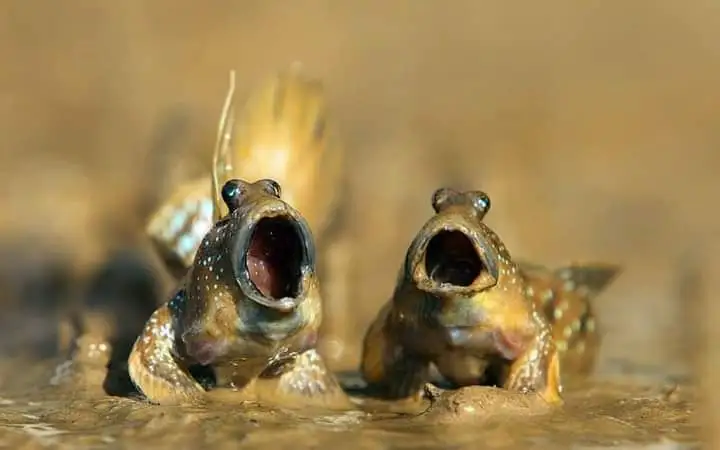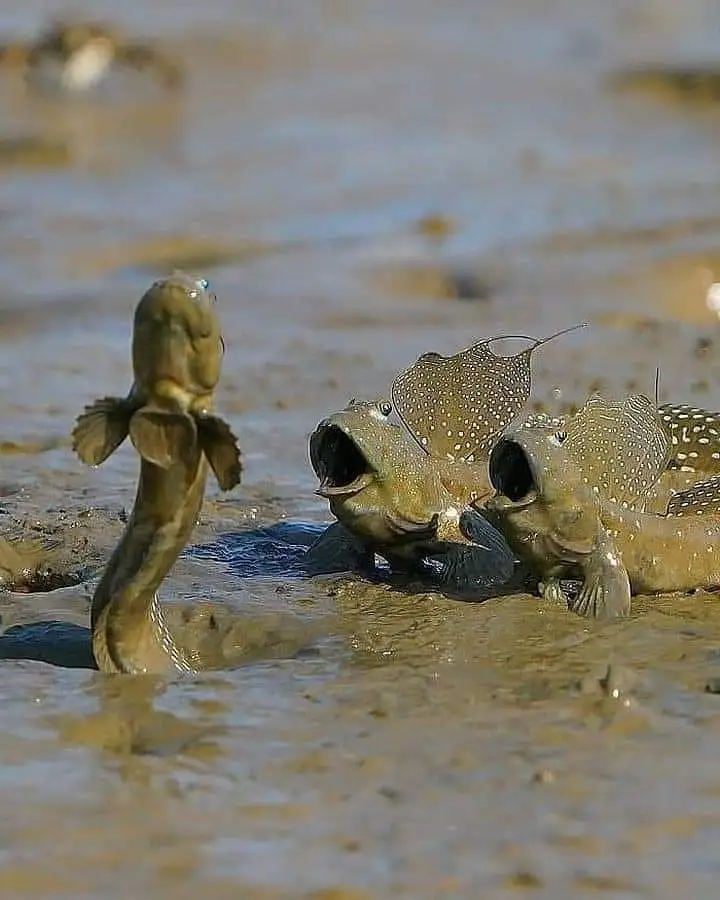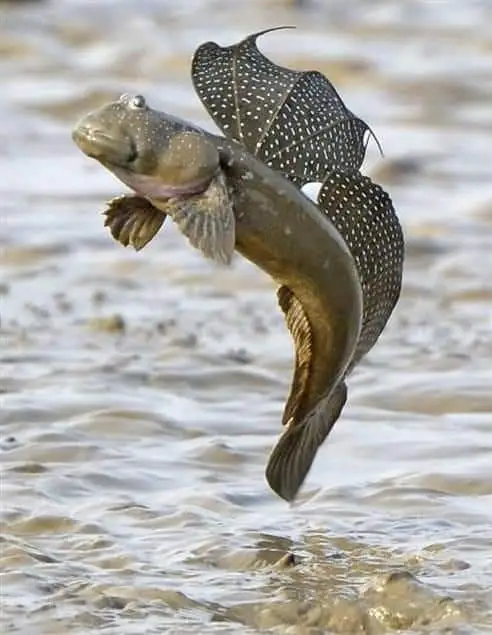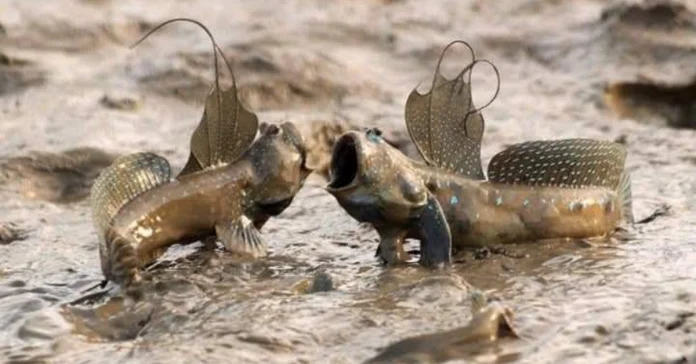Although we usually think being a “fish out of water” is a problem, there are actually quite a few fish that have changed over time to leave their underwater homes and move onto land. Just like frogs, which live both in water and on land, these fish have become amphibious.

Yet, among these amphibious fish, it’s the mudskipper that has possibly mastered living on land the most. Mudskippers, with around 25 different species, can be found in mudflats, swamps, and mangrove forests across Africa, South Asia, and South America. These creatures spend more than half of their lives on land, doing things like eating and mating, all without being in the water.
Right now, there might be a question for you. “How do they breathe in land?”. These amphibious fish have two ways to do this. The first way is by taking in oxygen from the air through their soft skin. They also use the lining inside their mouth and throat, which is full of tiny blood vessels that can absorb oxygen.

The second method is more straightforward. Mudskippers use their gills to trap water in their pockets, keeping it there to get oxygen over time. This is why you might see some species heading to the water, opening their mouth wide, and taking in big mouthfuls of water.
Do you know how they move on land? Mudskippers move on land by using their pectoral fins like small arms. These fins actually have small joints similar to human elbows and shoulders. This lets them fold their fins and do push-ups, propelling themselves forward one step at a time on land.
Would you like to know about Mudskippers’ diet and their predators? Here are some details. Mudskippers are meat-eating fish that come out of the water to find food. This is because they have trouble catching prey in the water. Before going onto land, each mudskipper takes a mouthful of water to use as a “hydrodynamic tongue.” On land, it jumps onto its prey and pushes out some of the water in its mouth. The water covers the prey, and then the mudskipper sucks the water back in, bringing the prey with it. The water also works like a tongue by helping the mudskipper swallow the prey by guiding it to the back of its mouth.

These Mudskippers eat small crustaceans like crabs, as well as snails, worms, and different insects. There are also some reports that say they sometimes eat their own kind, which is called cannibalism. And also, these fish have many animals that hunt them, both on land and in the water. On land, animals like mammals, snakes, and birds like herons and kingfishers can be predators. In the water, bigger predatory fish and water snakes can also prey on them.
Now you may wonder about their breeding cycle and life span. Let’s discuss it as well. During their breeding season, male mudskippers compete for females by jumping as high as two feet in the air and showing off. The winning male goes with the female to her burrow, which she makes by taking mud in her mouth and throwing it out. When the female puts her eggs in the burrow, possibly hundreds at a time, the male fertilizes them. Soon after, the female goes away, leaving the male to protect the eggs. When the tide is low, the male blows air into the burrow to help the baby fish grow. When the babies are fully developed, the male takes the air out of the burrow to let water in when the tide rises at night. The water makes the babies hatch!


